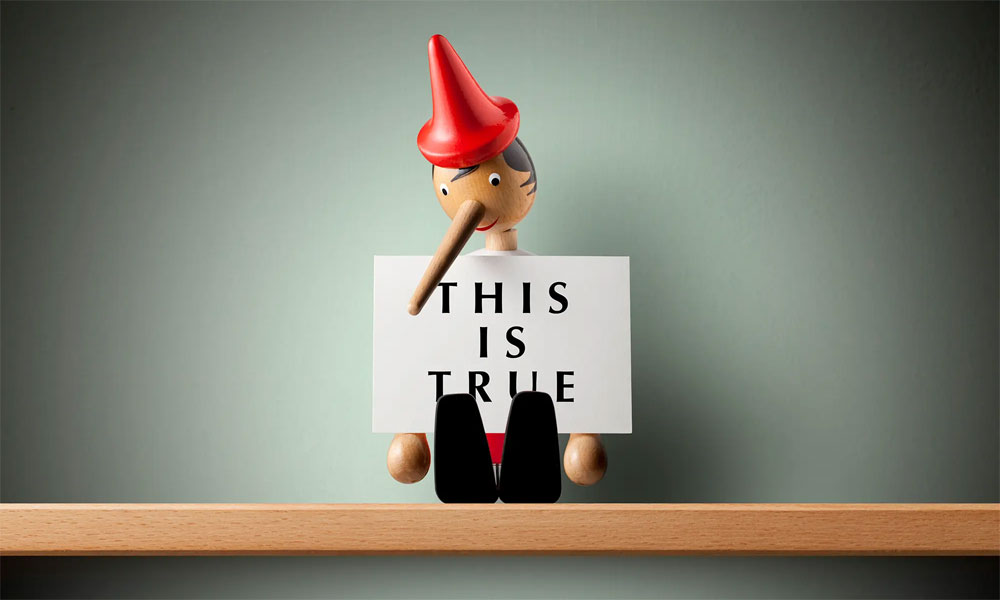Researchers Reveal Why Liars Keep Lying

The intentional telling of untruths generally known as ‘lying,’ is one thing that most individuals – if not all folks – are responsible of. Dishonesty is an inherent a part of life in society, and adversely influences numerous areas – each massive and small; each individually and collectively. We can all just about agree on these factors about liars.
Something that we’re all doubtless in settlement on some folks lie greater than others. In some instances, far more than others. Perhaps we’ve all recognised or been acquainted with somebody with a propensity for telling untruths. Such people are ‘compulsive liars,” as their ability to manipulate the truth seems to have to boundaries.
This Is Why Liars Keep Lying
Behaviorally, we show that the extent to which participants engage in self-serving dishonestly increases with repetition. Using functional MRI, we show that signal reduction in the amygdala is sensitive to the history of dishonest behavior, consistent with adaptation. – Garrett, N. et. al, “The brain adapts to dishonesty”
Why do liars keep on lying? Even in cases where they fully comprehend the pain that lying inflicts, why do people compulsively engage in dishonesty? Is it a choice? Is there something wrong with their brain?
To shine some light on the complex matter of compulsive lying, a team of researchers at University College London (UCL) engineered a fascinating experiment.
The Study on Why Liars Are Always Lying
The rationale given for the study, published in the journal Nature Neuroscience:
From financial fraud to plagiarism, online scams and scientific misconduct, deceivers retrospectively describe how minor dishonest decisions snowballed into significant ones over time. Despite the dramatic impact of these acts on economics, policy and education, we do not have a clear understanding of how and why small transgressions may gradually lead to larger ones.
In simple terms: the team wanted to know why lying not only appears to increase frequency, but in scope.
The researchers decided to recruit 80 participants and monitor their brain activity using a Functional magnetic resonance imaging (fMRI) machine. However, the team recognised the inherent difficulty in observing deception using brain scans, as “participants need to repeatedly, deliberately and voluntarily act dishonestly in a social context without being required to admit their dishonesty.”
To work around these difficulties, the team devised a creative experimental model, whereby they were able to observe and quantify deception using a trial-by-trial method. Specifically, the team created a two-party experiment.
Each person advised their “partner” on the amount of money contained in a glass jar with pennies. Importantly, there were incentives serving as the motivation to deceive. Over the course of the experiments, the incentive model was altered, so that the money would benefit or harm one of the two partners. In every case, the participant was required to lie in order to benefit themselves.
The team conducted two experiments:
Experiment #1: Both the participant and partner benefit if participant lies; only participant benefits if they lie; or partner benefits.
Experiment #2: Either the participant or partner benefits, excluding either/or if the participant lies.
Experiment Results
We observed clear evidence of escalation in self-serving dishonestly (participant only benefits), such that the magnitude of dishonesty got larger and larger…
The ‘magnitude’ of dishonesty escalated with self-serving incentives, versus self-harming (associate advantages, affecting the participant). In different phrases, nearly all of the 80 folks had been more likely to lie when the circumstances benefited solely themselves, whereas utterly disregarding their associate’s stake.
The group’s hypotheses, then, had been confirmed right by this research. In every trial, the situations of dishonest conduct quantitatively elevated. Per the research:
If certainly alerts that will assist curb dishonesty diminished over time, dishonest acts might enhance. Thus, what begins as small deviations from an ethical code might escalate to massive deviations with doubtlessly dangerous penalties.
The ‘signals’ the researchers are referring to is the exercise of the brain often known as the amygdala. Arousal of the amygdala is a response to “various emotion-eliciting situations, with stronger activity related to more potent experiences.”
Myriad analysis research have confirmed the central position of the amygdala in experiencing feelings. Lying and dishonesty, to most individuals, is an uncomfortable act. Hence, our amygdala responds accordingly by activating to the stimulus.
It Also Explains Why Liars Keep Lying
As the researchers noticed the fMRI scans, it was clear that dishonest conduct reminiscent of mendacity will increase exercise of the amygdala. Furthermore, the group noticed with every subsequent experiment – because the contributors continued to lie – the much less lively the amygdala turned.
In different phrases, when dishonesty and mendacity develop into routine, the a part of the human brain accountable for emotional arousal – to not point out, self-control – merely accepts such exercise as regular. It is something however…












